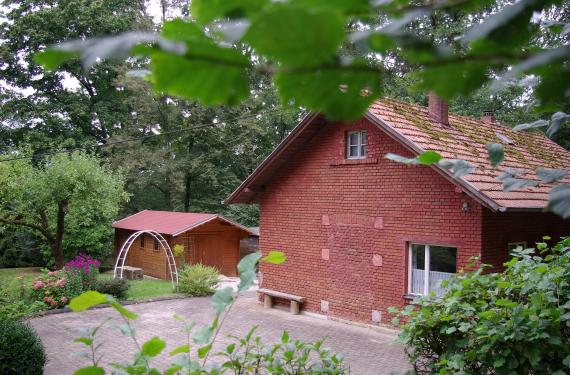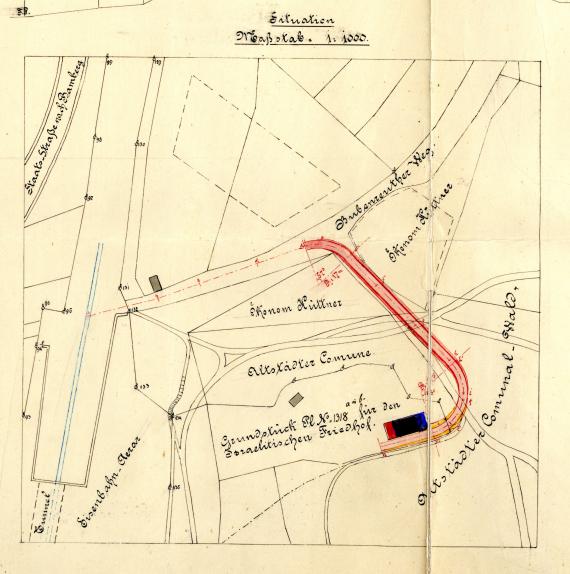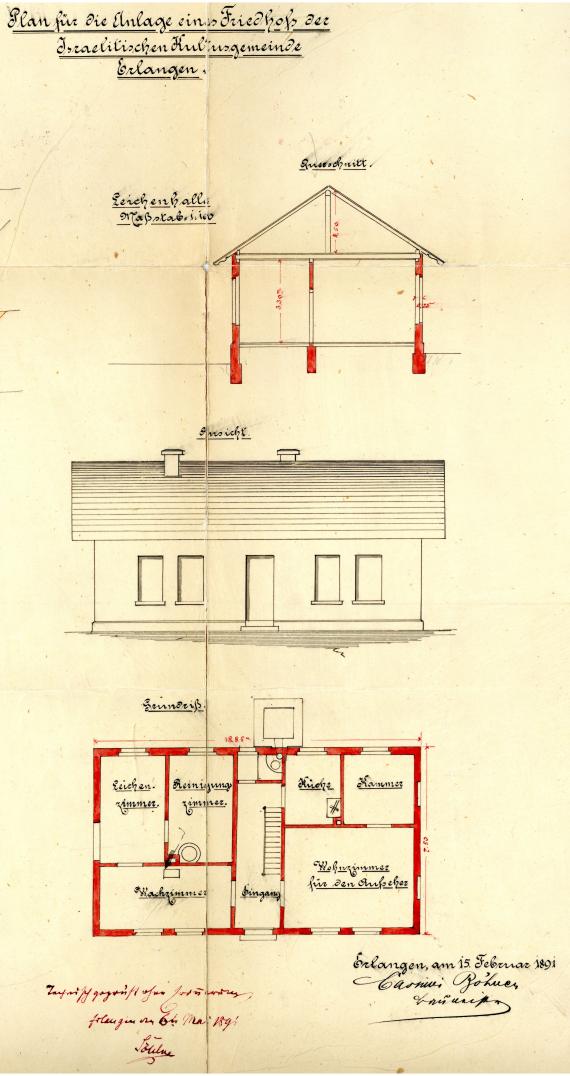Rudelsweiherstraße 85
91054 Erlangen
Germany
The dead of the Jewish community were initially buried in Baiersdorf, until in 1891 a separate cemetery could be established in Erlangen. A long period of planning and application had preceded. Initially, the Jewish Community of Erlangen had received several negative notices from the responsible authorities, until in April 1891 a plenary resolution of the city council allowed the construction of a burial ground "Auf dem Berg 11 1/2". The cemetery was consecrated on September 30, 1891 by the Fürth District Rabbi Dr. Jakob Neuburger.
Less than two months after the dedication of the cemetery, Max Aronstein was the first to be buried in November 1891; his grave is located at the western edge of the cemetery (occupancy map entered above with No. 1; photo of gravestone below). Among those buried in the following decades are also two of the three religious teachers of the Jewish community: Moritz Morgenthau and Leopold Katz; the last Jewish teacher (Justin Fränkel) died in emigration.
In the Nazi period, burials were still made until 1939. Shortly before that, the cemetery had been desecrated and largely devastated. Had been in the night of May 28, 1939, the first tombstones "by unknown hand" (as the press wrote) overturned, so followed with the exception of about 20 epitaphs four weeks later the rest. In 1940, in connection with the so-called "metal donation" imposed throughout the Reich, almost everything that had been attached to the graves in a metal form was stolen from the cemetery (only two bronze eyelets, and a decorated steel bar can still be found today). On August 25, 1942, with the exception of Hildegard Laink-Vißing née Katz, the last remaining Jews from Erlangen had been removed - her mother and sister Gottliebe Benesi née Katz with her husband and children. On September 14, 1942, the property was purchased by the residents of the cemetery house from the Reich Association of German Jews in Berlin, for which a notarized purchase agreement was drawn up.
After 1945: After the end of the war, the cemetery was repaired by order of the American authorities. In 1946, the Law on the Legal Status of Religious Communities in Bavaria came into force, according to which those assets had to be returned which had been in the possession of the religious communities on January 1, 1933, and which had been seized from them during the National Socialist reign. The process concerning the cemetery was made a matter of record on April 27, 1946, with a letter of reply from the mayor of Erlangen, Hammerbacher, to the "State Commissioner for the Care of the Jews in Bavaria". It was not until 1951 that the transfer of ownership of the cemetery property from 1942 was reversed and decided in favor of the Landesverband der israelitischen Gemeinden Bayerns (Bavarian Association of Jewish Communities). (As controversial as such changes of ownership are considered today, it cannot be ignored that the "privatization" of the cemetery will have played a decisive role in preserving it in its (albeit vandalized) state in the first place.) Since the 1950s, the cemetery property has been cared for and maintained by the residents who remained in the former Tahara House.
The Erlangen Jewish cemetery is surrounded by a hedge and a wire fence. On November 6, 1983, a memorial stone was erected for the community that was wiped out during the Nazi era. The Erlangen visual artist Gerhard Schmidt-Kahler created a bronze cartouche with a relief image of a menorah for it. It commemorates the Jewish citizens of Erlangen who fled and perished during the Nazi era, who were murdered in concentration camps or died by suicide. The memorial had been one of the earlier such monuments in Germany, and was in keeping with the restrained style of the time for such installations. In the past decades, it had always been the central place of Erlangen's commemoration of the "Night of Shame" mourning ceremonies around November 9. This integrating function at the only place in Erlangen that always belonged to Erlangen's Jews has since been lost by the memorial: today the ceremonies take place at another location.
Number of graves in the cemetery: 160 people were buried until October 1939. 141 names of adults have survived. In addition, there are 20 children's graves, seven of which are known by name. A memorial to the fallen is designed as a gravestone. There are memorial inscriptions on seven gravesites, which were placed after May 1945. Eight grave sites had been reserved for spouses. After the liberation of Germany there were three named burials, perhaps four more; only one grave of these has a headstone. A former gravestone from about 1910 and two postaments found in 2015 can no longer be attributed.
Since the reestablishment of the Jewish community in Erlangen, the cemetery is again open for burials of this community. Until March 1, 2018, 40 gravesites have been created or reserved there.




Add new comment